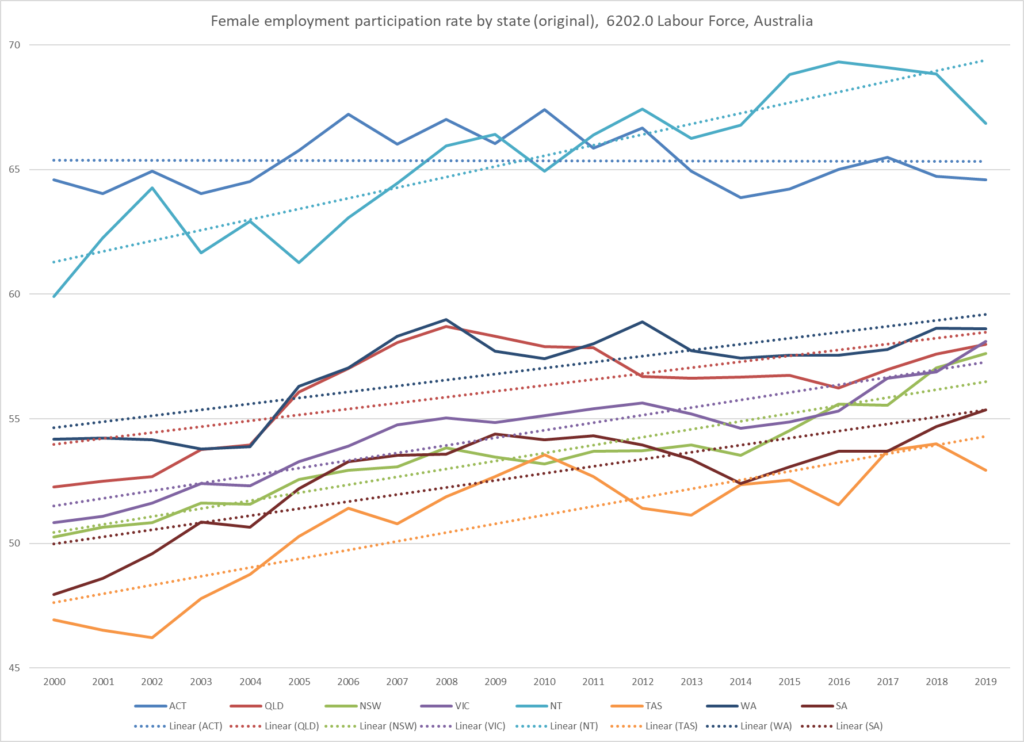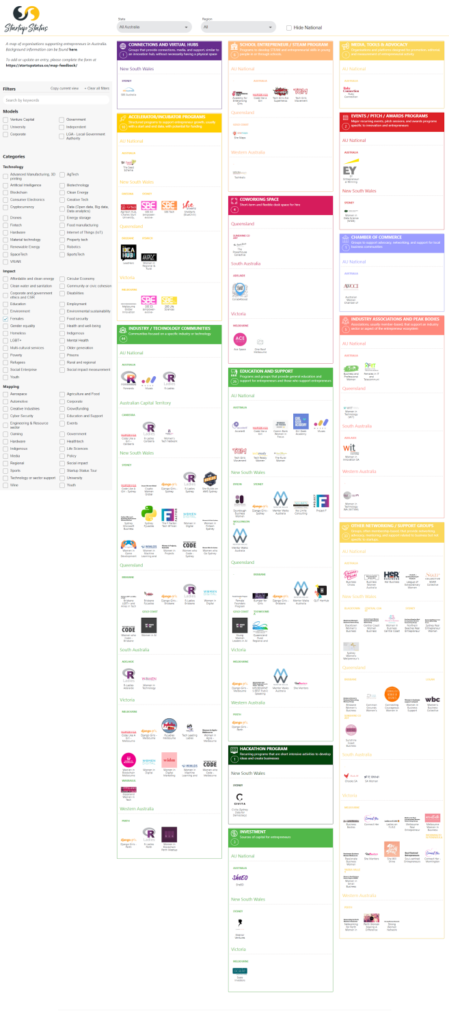The ecosystem of support for female entrepreneurs in Australia – 2020 edition
How has support for female entrepreneurs in Australia changed over time?
On International Women’s Day 2020, we briefly review the entrepreneur ecosystem supporting Australian female entrepreneurs and how it has changed over the years.
The case for dedicated support for female entrepreneurs: merit, equality, and motivation
There is an imbalance in gender ratios in the business community. Society benefits when this imbalance is addressed. The contributing factors to the imbalance, however, are complex, embedded, and systemic. This means resolutions will take time as well as intentional and collective effort.
These factors were outlined in last year’s Map of Support for Female Entrepreneurship in Australia. The case for change remains as outlined in the previous post. For 2020, we can look at developments over the past 12 months.
In December 2019, the ASX 200 cracked the 30pc female directors target. Now designated as “base camp” levels, the aim is a ’40:40:20 model in which boards are made up of 40 per cent women, 40 per cent men and 20 per cent either gender’. In January 2020, Goldman Sachs stated they will no longer do IPOs for companies with all-male boards. The topic of quotas versus merit remains a debate in the tech community, highlighted by a discussion on the Sydney Startups Facebook group which subsequently made national press in the Financial Review.
Debates about merit versus quotas often lead to a conversation about “supply”, or the number of females available for leadership roles. The current trend of female participation leads us to believe that there will be a a time when this is less of a factor. A January article in the Australian Financial Review noted that Queensland’s biggest drop in unemployment in four years was driven by females. “Women added 2700 jobs in December alone, driving their unemployment rate down to 5 per cent from 5.8 per cent.”
The graph below is based on ABS data on female participation rates by state, showing an upward trend over the past 20 years.

Society is moving towards gender equality, and current efforts should be continued and increased to build on momentum. Females are increasingly attaining leadership roles and more females are participating in employment. But what about entrepreneurship?
The 2020 Global Entrepreneurship Monitor report supported by the Australian Centre for Entrepreneurship Research provides insights into the current situation. Females are less likely to participate in entrepreneurial activities but the gap is closing and indeed has reached parity in some countries.

This matters not just to attain equality, but for the betterment of society. When asked about motivation, female entrepreneurs are significantly more likely than males to be motivated by making a difference in the world.

Female entrepreneurship matters. It makes sense then that there is a growing support network for female entrepreneurs.
The map of support for female entrepreneurs

The map above is an updated representation of support for female entrepreneurs in Australia in 2020. With over 120 actors, we will not go through each entry but you can explore the live data at your.startupstatus.co. A screen grab is below:

The increased number of industry and technology communities and other networking groups is in part due to a data collection focus on that aspect of the ecosystem. Specifically we are mining meetup.com and eventbrite.com to identify new hubs. A few new government and university programs have been introduced and there is increased regional support.
The number of organisations and programs in the map has increased. But is that a factor of more entries being added to Startup Status rather than more support organisations starting?
The scope for the question is beyond this report as there remains much data that is not in the system. We can, however, explore established dates for the organisations in the data we do have.

Again, the graph does not show those organisations that are not in the data, but there are interesting points to note about those that are in the system.
First, most of the education and support programs, networking groups, and industry communities are relatively new. This could reflect an increase in focus on female entrepreneurship. It could also be a factor of the transient nature of these types of organisations. Graphs in a few years time will provide more insights.
Second, female-focused industry associations and peak bodies have been around for decades. It could be said the modern programs such as Blue Chilli’s She Starts accelerator or the ShEO investment program are due in some part to the women who established the Business and Professional Women club in Australia in 1925.
Anything we do now builds on the efforts of those who came before, just as our work will contribute to others who will do so much more than we can imagine.
What’s next
The increased support for female entrepreneurs is having an impact and the work needs to continue and expand. But there is no end point.
The equality challenge is shared across other areas, including nationality, geography, and age. By looking at what is working over time, we can see what strategies and approaches can be shared for other communities where there is not equal representation such as indigenous populations, regional communities, and older workers experiencing industry transition.
Entrepreneurship is an important pathway to provides opportunities. We can learn from what is working to ensure it is available for as many as possible.
These posts are designed to raise awareness and find others working in the field. If you find something missing or that needs to be corrected on the map, please let us know through the feedback form.
For other feedback, feel free to comment below or reach out to me through LinkedIn, at Startup Status, or the Australian Centre for Entrepreneurship research at QUT.
